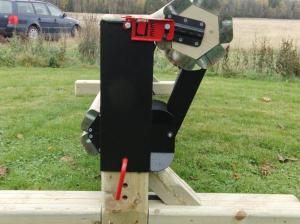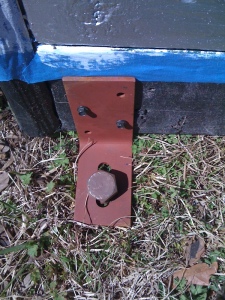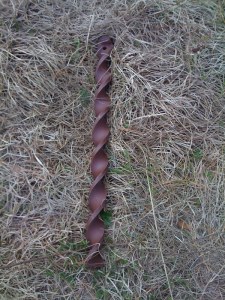From Grant Johnston FEI I Course Designer
As an International Course Designer and Builder, the one thing I can note is that we are always trying to build jumps as safely as possible.
I also note that at some of the major events this year in the UK and USA, that some of the frangible pin technology DID NOT fail when it should have. This may have been because the pins were not correctly installed, possibly the way the horse hit the fence meant that there was not enough pressure going ‘down’ or it could have been that the pins simply were not appropriate for the style of the fence.
I would hope that we in Australia could encourage Eventing NSW to lobby Equestrian Australia to provide funds for Course Safety improvements. Not only to provide ‘pins’ and the like freely to event organisers (there are also plenty of other safety improvements out there now besides pins), but also provide funding so both our professional and amatuer course builders, Course Designers AND Technical Delegates are shown HOW to install them and what situations they are appropriate.
There is no doubt that many of the new safety devices currently in use are expensive so many event organisers in Oz shy away from this due to budget constraints, which means that we need our governing body to assist in providing funds to make it more achievable for event organisers to make it safer… The other option will simply be, that for event organisers to make it viable they have to continue to increase entry fees, something which most riders DON’T want to see.
After spending some time in Europe this year at Badminton and other events, If I were still riding today, I would be investing in every technology I could to protect myself. A high quality body protector, an air jacket, the safest helmet my budget could afford and I wouldn’t ride ‘yanga’s’…
Also as a rider, I would be happy to put in for a ‘sinking’ fund that would not only assist in making our courses better, but also make the courses ‘SAFER’.
Riders need to lobby for this to happen.. It won’t happen on it’s own.
My Response
Thanks Grant I agree. In the US frangible pins are required and provided FREE by the USEF to all Events. NO limits. In Holland the cardboard poles are also REQUIRED and FREE to EVERY event, I think the Dutch add $2.5 euros to every entry to cover cost of poles and transport.
BUT that is only the first step. No point having them if people don’t know how to use them:
A.In the correct situation, on the right fences at the right height, weight, etc.
B How to install them correctly.
The best example of instructions I have found, and indeed the ONLY real one, is from the USEA, This document is constantly evolving to meet the changes, lessons learned and keep up with standards.
Here is the link for the USEA page on my site and here is the actual document.
As for the NEW technology, I too have been lucky enough to see the Mim Clip and ProLog in action this year. Both hold huge promise. Course Builders, Organisers, Federations and the FEI need to use, test, report, share and build a bank of data that can help us get to where we are currently with the frangible pins now, much quicker.
No excuses, no umming and arrring, JUST DO IT, because the quicker we get it right the more lives we will save, that simple. in the meantime, we must test in competition at ALL levels and sometimes we will NOT get it right, but better to fail trying than not at all.
As for here in Australia, to date, other than the fall study which is now a few years old. I have been unable to find ANY documents, minutes, guidelines or anything else related specifically to Eventing – Safety or Risk Management (whichever floats your boats) that has been produced here in Australia.
We need to seriously pull our fingers out and get on the front foot, support our Officials, Designers/Builders, Organisers and most importantly Horses & Riders and get this right.
I know first hand that the average small competition in Australia can’t afford to put the 6-10 frangible fences they need in. BUT can we as a sport afford for them NOT TOO. It is only a matter of time before we lose another rider in Australia. We don’t want to be in a position to say, that fence would have been pinned (or other) if we could afford it.






